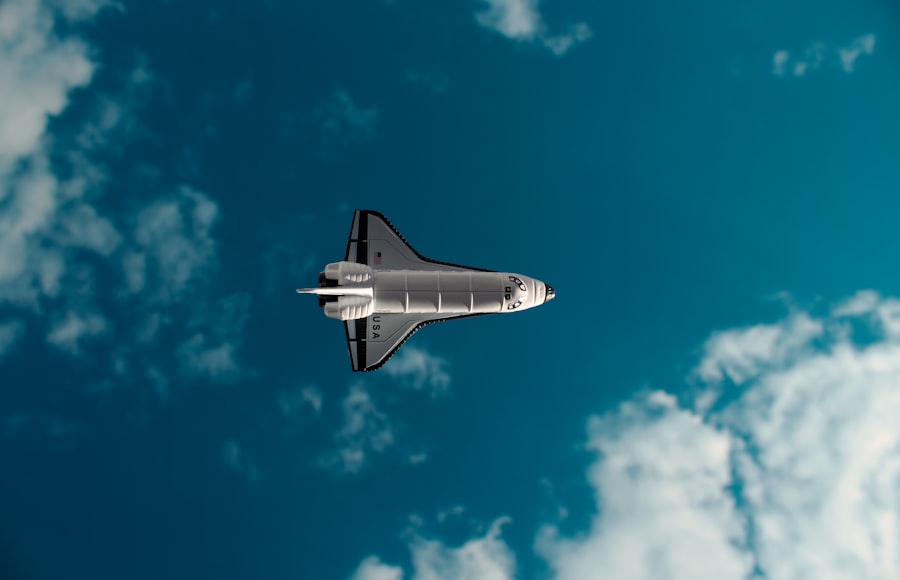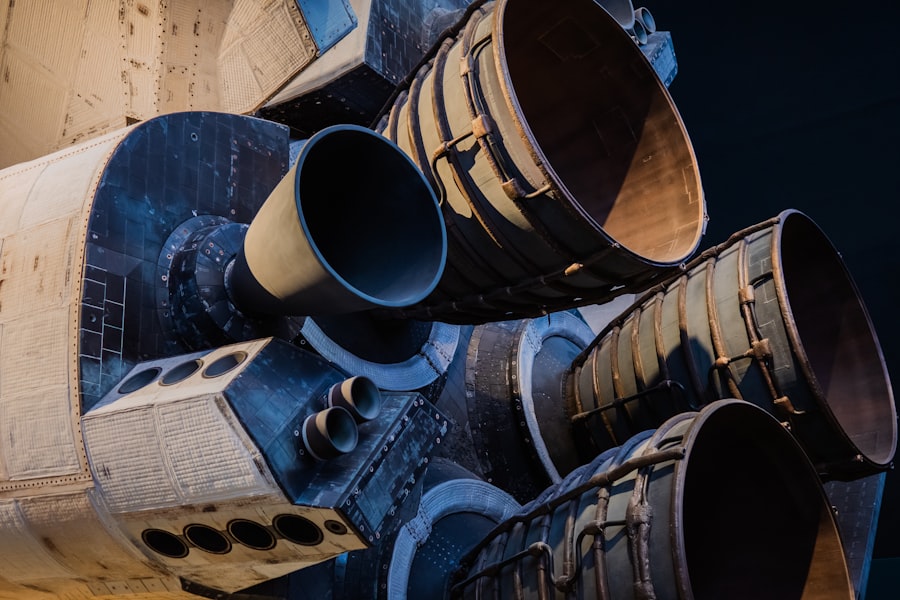The Space Shuttle Program, initiated by NASA in the 1970s, marked a significant evolution in human spaceflight. Officially launched in 1981 with the flight of STS-1, the program was designed to provide a reusable spacecraft capable of carrying astronauts and cargo to low Earth orbit. The shuttle’s design featured a unique combination of a winged orbiter, solid rocket boosters, and an external fuel tank, allowing it to take off like a rocket and land like an airplane.
Over the course of its operational life, which spanned three decades, the program completed 135 missions, culminating in its final flight in July 2011. The Space Shuttle was not merely a vehicle for transportation; it represented a paradigm shift in how humanity approached space exploration. Its reusability was revolutionary, allowing for multiple missions with the same hardware, which significantly reduced costs compared to previous single-use spacecraft.
The program was instrumental in constructing and servicing the International Space Station (ISS), deploying satellites, and conducting scientific research in microgravity. The shuttle’s versatility and capabilities made it a cornerstone of NASA’s human spaceflight efforts and laid the groundwork for future exploration endeavors.
Key Takeaways
- The Space Shuttle Program was a groundbreaking initiative by NASA to develop reusable spacecraft for space exploration.
- The Space Shuttle made significant contributions to space exploration, including deploying satellites, conducting scientific research, and building the International Space Station.
- The Space Shuttle Program had a profound impact on scientific research, enabling experiments in microgravity and advancing our understanding of space and the universe.
- The Space Shuttle played a crucial role in international cooperation, with missions involving astronauts from various countries and collaborations with international space agencies.
- The Space Shuttle’s legacy includes technological innovations such as advancements in materials, robotics, and life support systems that have influenced future space exploration efforts.
The Space Shuttle’s Contributions to Space Exploration
The contributions of the Space Shuttle to space exploration are manifold and profound. One of its most notable achievements was the deployment of the Hubble Space Telescope in 1990. This iconic observatory has transformed our understanding of the universe, providing breathtaking images and invaluable data that have led to groundbreaking discoveries about galaxies, black holes, and the expansion of the universe.
The shuttle’s ability to service Hubble through multiple missions allowed for upgrades and repairs that extended its operational life far beyond initial expectations. In addition to deploying telescopes, the shuttle played a crucial role in building the ISS, which has become a symbol of international collaboration in space. Over 30 missions were dedicated to transporting modules, supplies, and astronauts to the ISS, facilitating its construction and ongoing operation.
The shuttle’s ability to carry large payloads and its robotic arm enabled astronauts to assemble complex structures in orbit, showcasing human ingenuity and engineering prowess. This collaborative effort not only advanced scientific research but also fostered diplomatic relations among nations, as countries worked together toward common goals in space.
The Impact of the Space Shuttle Program on Scientific Research

The Space Shuttle Program significantly advanced scientific research across various disciplines. One of its primary functions was to conduct experiments in microgravity, which provided unique insights into fundamental scientific questions. For instance, studies on fluid dynamics, combustion, and material science conducted aboard the shuttle revealed phenomena that could not be replicated on Earth due to gravity’s influence.
These experiments have led to advancements in technology and materials that benefit industries ranging from pharmaceuticals to manufacturing. Moreover, the shuttle served as a platform for biological research that explored the effects of microgravity on living organisms. Experiments involving plants, animals, and human physiology have deepened our understanding of biological processes and adaptations.
Research conducted on the shuttle has implications for long-duration space travel, such as missions to Mars, where understanding how microgravity affects human health is critical for astronaut safety and mission success. The wealth of data generated by shuttle missions continues to inform current research initiatives and will undoubtedly influence future explorations.
The Space Shuttle’s Role in International Cooperation
| Country | Number of Space Shuttle Missions | International Cooperation |
|---|---|---|
| United States | 135 | Collaborated with various countries on space missions |
| Canada | 14 | Contributed robotic arm technology to the Space Shuttle program |
| Japan | 9 | Participated in Space Shuttle missions and contributed to the International Space Station |
| European Space Agency (ESA) | 22 | Collaborated with NASA on various Space Shuttle missions |
The Space Shuttle Program was a catalyst for international cooperation in space exploration. During its operational years, NASA collaborated with various space agencies around the world, including the European Space Agency (ESA), the Russian space agency Roscosmos, and others. This collaboration was exemplified by joint missions and shared scientific objectives that transcended national boundaries.
The shuttle’s role in launching international payloads and astronauts fostered goodwill and strengthened partnerships among nations. One of the most significant outcomes of this international cooperation was the development of the ISS. The shuttle served as a vital transportation link for astronauts from different countries who worked together on scientific experiments aboard the station.
This collaborative environment not only advanced scientific knowledge but also promoted cultural exchange and mutual understanding among diverse teams of scientists and engineers. The legacy of this cooperation continues today as countries unite in their efforts to explore deeper into space.
The Space Shuttle’s Legacy in Technology and Innovation
The technological advancements spurred by the Space Shuttle Program are numerous and far-reaching. The development of reusable spacecraft technology represented a significant leap forward in aerospace engineering. Innovations such as advanced thermal protection systems, computer systems for navigation and control, and robotic arms have had lasting impacts on both space exploration and commercial aviation.
Many technologies developed for the shuttle have found applications beyond space travel, influencing industries such as telecommunications, materials science, and even everyday consumer products. Furthermore, the program catalyzed advancements in engineering practices and project management methodologies within NASA and the aerospace industry at large. The challenges faced during shuttle missions led to improvements in safety protocols, risk management strategies, and quality assurance processes.
These lessons learned have been instrumental in shaping subsequent programs, including those focused on Mars exploration and commercial spaceflight initiatives. The legacy of innovation fostered by the shuttle program continues to inspire new generations of engineers and scientists.
The Challenges and Tragedies of the Space Shuttle Program

Despite its many successes, the Space Shuttle Program was not without its challenges and tragedies. The program experienced two catastrophic accidents: the Challenger disaster in 1986 and the Columbia disaster in 2003. Challenger broke apart just 73 seconds after launch due to a failure in its O-ring seals, resulting in the loss of all seven crew members aboard.
This tragedy prompted a thorough investigation that revealed flaws in NASA’s decision-making processes and safety culture. Similarly, Columbia disintegrated upon re-entry due to damage sustained during launch when foam insulation broke off from the external tank and struck the shuttle’s wing. This incident underscored the importance of rigorous safety measures and led to significant changes in NASA’s approach to risk assessment and management.
Both tragedies served as sobering reminders of the inherent dangers associated with human spaceflight and prompted extensive reviews of engineering practices, safety protocols, and organizational culture within NASA.
The Future of Space Exploration: Lessons from the Space Shuttle
The lessons learned from the Space Shuttle Program are invaluable as humanity looks toward future endeavors in space exploration. One key takeaway is the importance of safety culture within organizations involved in high-risk activities. The tragedies associated with the shuttle program highlighted the need for transparent communication, thorough risk assessment, and a commitment to prioritizing safety above all else.
As new missions are planned—such as those aimed at returning humans to the Moon or sending crewed missions to Mars—these lessons must be at the forefront of mission planning. Additionally, the shuttle program demonstrated the value of international collaboration in achieving ambitious goals in space exploration. As private companies increasingly enter the realm of space travel alongside national agencies, fostering partnerships across borders will be essential for addressing complex challenges such as sustainable exploration practices and planetary defense against asteroids or other threats.
By building on the cooperative spirit exemplified by the shuttle program, future missions can benefit from shared expertise and resources.
Remembering the Space Shuttle Program: Honoring its Legacy
As we reflect on the Space Shuttle Program, it is essential to honor its legacy by recognizing both its achievements and its challenges. Memorials dedicated to the astronauts who lost their lives during shuttle missions serve as poignant reminders of their bravery and dedication to advancing human knowledge through exploration. Educational initiatives aimed at inspiring future generations about space science can help ensure that their sacrifices are not forgotten.
Moreover, preserving artifacts from the shuttle program—such as retired orbiters displayed in museums—allows visitors to engage with history firsthand while fostering interest in science, technology, engineering, and mathematics (STEM) fields. By celebrating the accomplishments of the shuttle program while acknowledging its difficulties, we can inspire a new generation of explorers who will continue humanity’s quest for knowledge beyond our planet.


